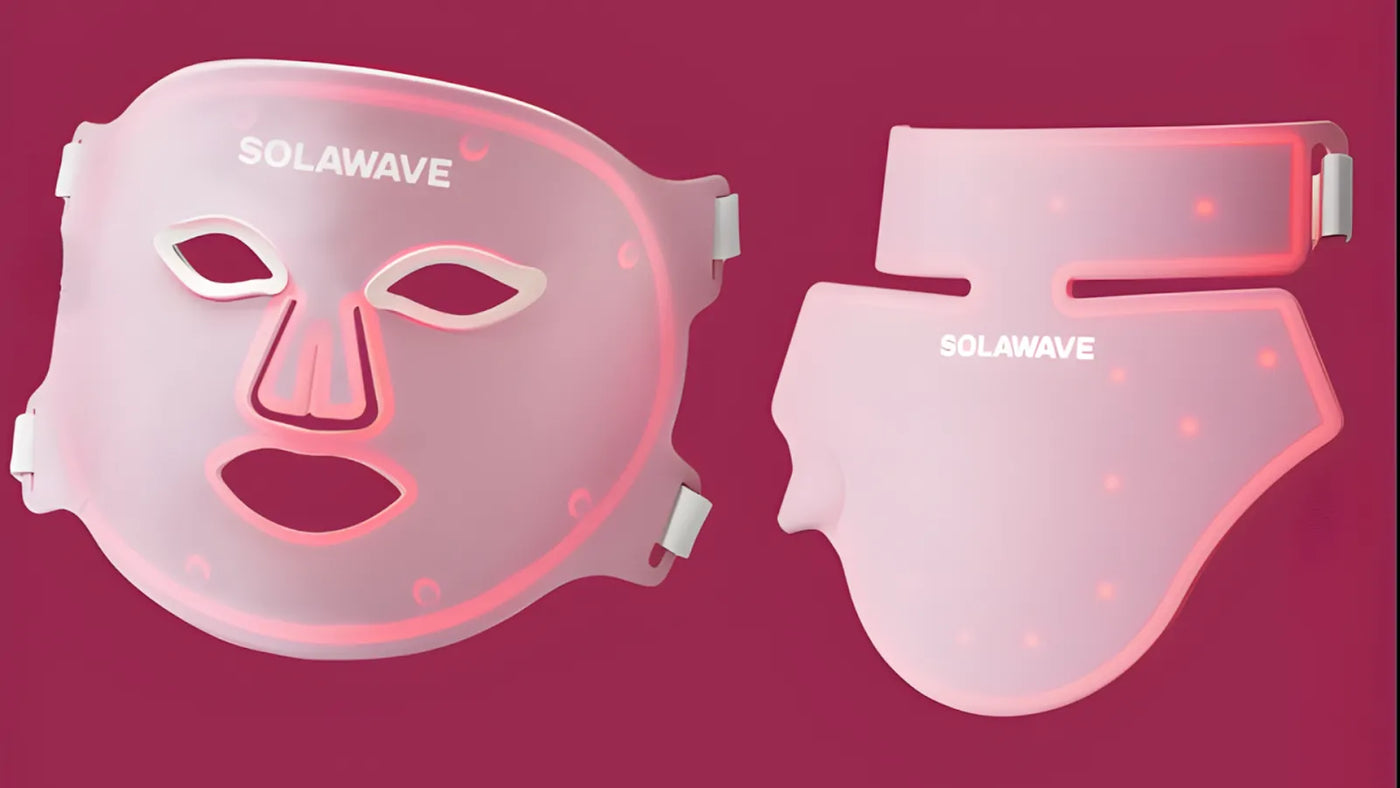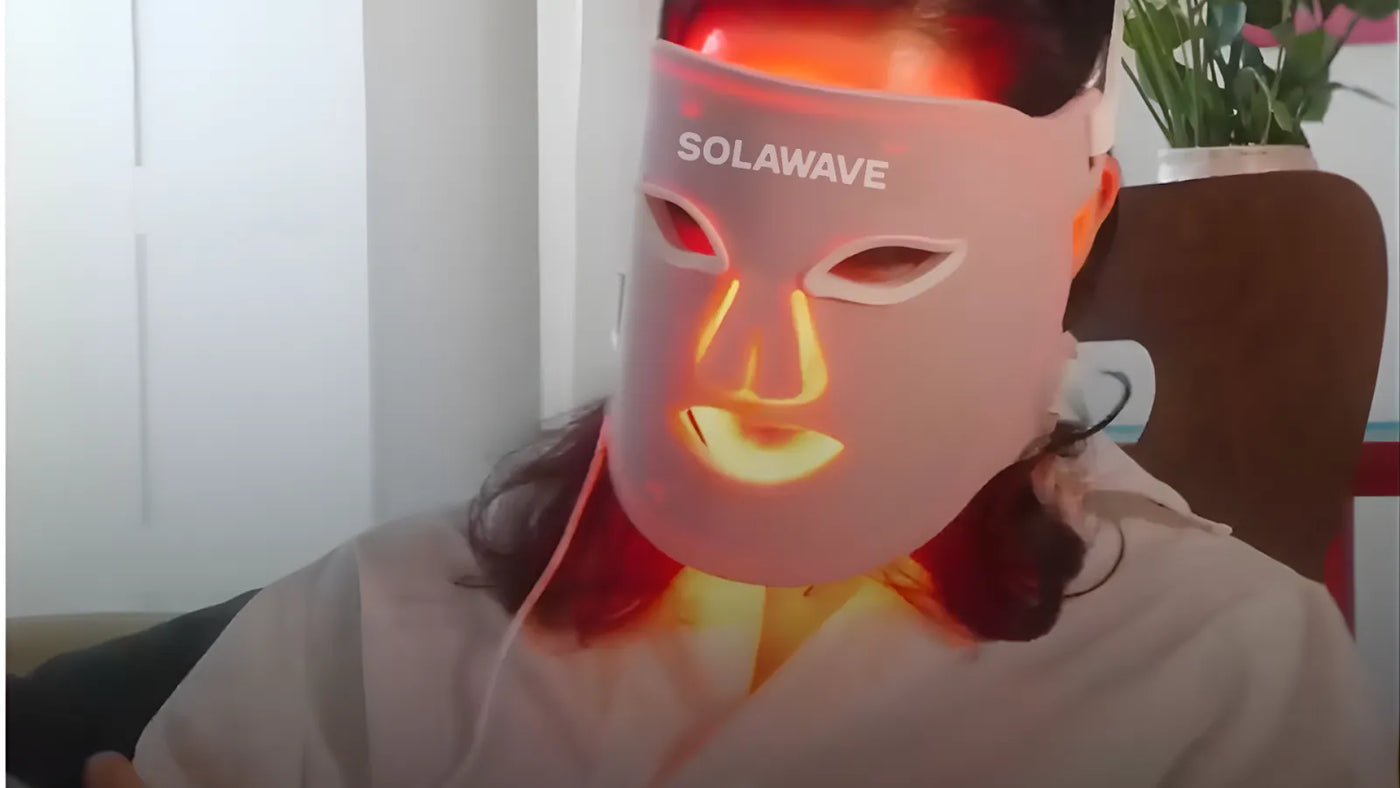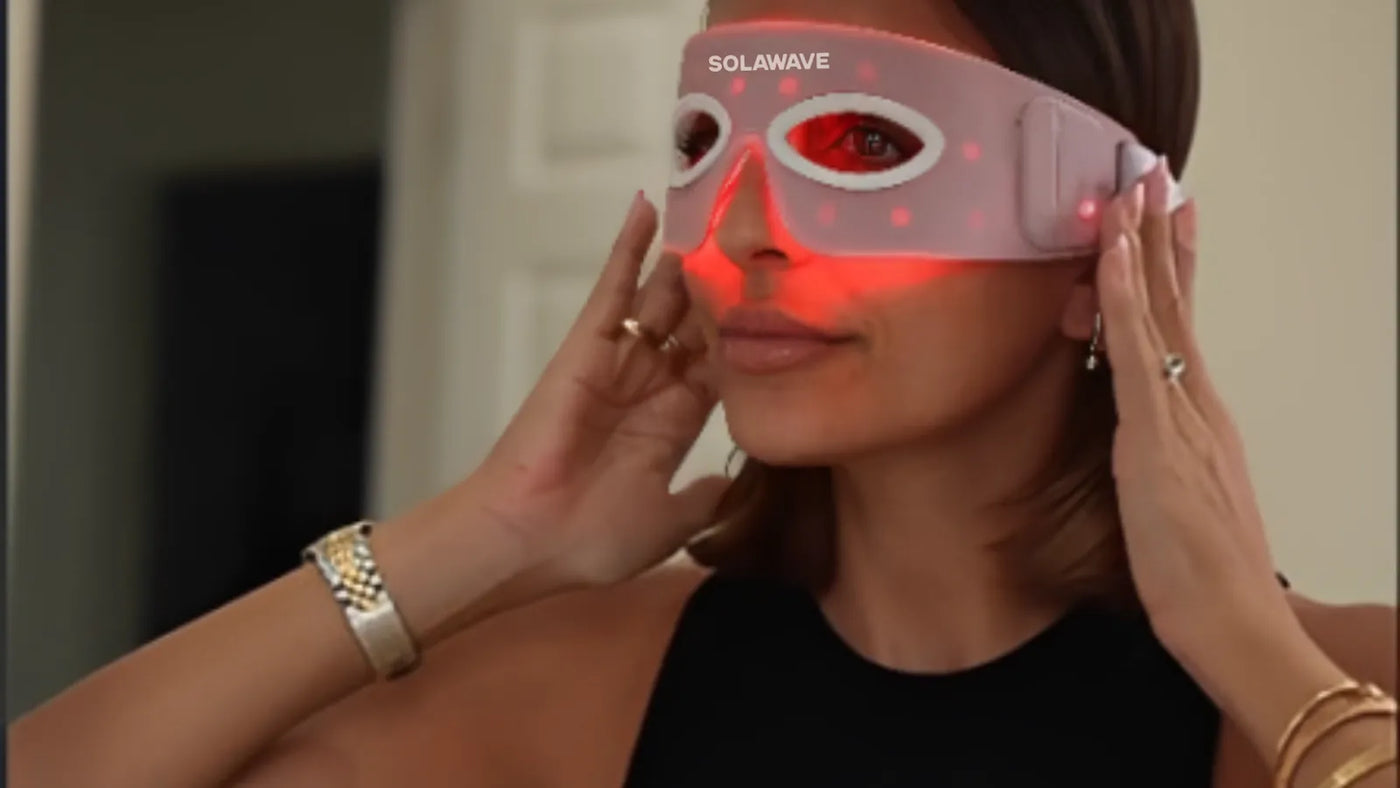

Red Light Therapy for Rosacea: Can It Help?
Rosacea is a common, chronic skin condition that often appears as persistent redness, visible blood vessels, and occasional bumps or pimples on the face. For many people, rosacea can be more than just a cosmetic concern — it can affect self-confidence and overall quality of life, especially during flare-ups.
We're here to talk about red light therapy and rosacea, including whether this popular skincare technology offers any benefits for those living with the condition. It’s important to note from the outset that red light therapy is not a proven cure or treatment for rosacea or any other medical condition. Instead, red light therapy is primarily used for its general skincare benefits, such as supporting a more youthful appearance and reducing visible signs of aging.
The information provided here is for educational purposes only. If you are experiencing symptoms of rosacea or any other skin concern, consult a qualified healthcare professional for accurate diagnosis and effective treatment options.
What Is Rosacea?
Rosacea is a long-term, inflammatory skin condition that most often affects the central areas of the face, including the cheeks, nose, forehead, and chin. It is characterized by persistent facial redness, visible blood vessels (also known as telangiectasia), and episodes of flushing. Many people with rosacea also experience small, red bumps or pus-filled pimples that can resemble acne, as well as sensations of burning or stinging.
Rosacea can affect anyone, but it is most commonly seen in adults between the ages of 30 and 50, particularly those with fair skin, light hair, and blue eyes. Women are more frequently diagnosed with rosacea, though men who develop the condition often experience more severe symptoms. While the exact cause of rosacea is not fully understood, several factors can trigger or worsen flare-ups. Common triggers include sun exposure, hot or spicy foods, alcohol, stress, extreme temperatures, and certain skincare products.
Because rosacea symptoms can mimic other skin conditions and vary widely from person to person, it is important to seek a professional diagnosis from a dermatologist or healthcare provider. Early and accurate diagnosis allows for better management of symptoms and helps prevent the condition from progressing.
What Is Red Light Therapy?
Red light therapy is a non-invasive skincare technique that uses specific wavelengths of visible red light, typically between 630 and 700 nanometers, to stimulate biological processes within the skin. Devices designed for red light therapy range from professional-grade equipment found in clinics to convenient at-home tools, all aiming to deliver these targeted wavelengths to the skin’s deeper layers.
In skincare, red light therapy is most commonly used to address visible signs of aging. It works by supporting healthy collagen production, which helps maintain the skin’s firmness and elasticity. As we age, our natural collagen levels decrease, leading to wrinkles, fine lines, and sagging. By encouraging collagen synthesis, red light therapy can help smooth the skin’s texture, reduce the appearance of fine lines, and promote a more youthful, radiant complexion. Some users also report improvements in skin tone, diminished redness from acne, and a brighter overall appearance.
It’s important to emphasize that while red light therapy offers aesthetic benefits for the skin, it is not a cure or treatment for rosacea or any medical condition. The primary value of red light therapy lies in its ability to support skin appearance and combat signs of skin aging. Anyone considering red light therapy, especially those with underlying skin conditions or sensitivities, should consult a healthcare professional before starting treatment.
Can Red Light Therapy Help with Rosacea?
The relationship between red light therapy and rosacea has generated interest among both skincare enthusiasts and individuals living with the condition. Some anecdotal reports suggest that red light therapy may help reduce the appearance of facial redness and visually calm irritated skin, which are common concerns for people with rosacea. However, it is important to recognize that these observations are largely based on personal experiences rather than robust scientific studies.
Currently, there is no strong clinical evidence to support red light therapy as an effective treatment for rosacea. Most research on red light therapy focuses on its general benefits for skin rejuvenation, such as supporting healthy collagen production, visually improving skin tone, and reducing visible signs of aging. While these effects can contribute to healthier-looking skin overall, they do not address the underlying causes or triggers of rosacea.
Some individuals with rosacea may notice temporary improvements in skin appearance, such as reduced redness or a calmer complexion, after using red light therapy. These aesthetic benefits are likely due to the therapy’s ability to support the skin barrier and promote a more even-looking skin tone. However, these effects should not be mistaken for a cure or a medically recognized treatment for rosacea.
It is essential to approach red light therapy with realistic expectations and to understand that it should not replace proven, evidence-based treatments prescribed by a healthcare professional. More research is needed to determine whether red light therapy can play any meaningful role in managing rosacea symptoms. If you are considering red light therapy, consult your dermatologist to ensure it is safe for your skin and to develop a comprehensive plan for managing rosacea.
Proven Treatments and Recommendations for Rosacea
Managing rosacea effectively requires a combination of evidence-based medical treatments and lifestyle adjustments tailored to each individual’s unique triggers and symptoms. While there is no cure for rosacea, many people are able to control their symptoms and reduce flare-ups with the right approach.
Medical Treatments
Dermatologists often recommend a range of topical and oral medications to help manage rosacea symptoms:
-
Topical Medications: Prescription creams and gels such as metronidazole, azelaic acid, and ivermectin are commonly used to reduce inflammation, redness, and the appearance of bumps or pimples. These medications are applied directly to the affected areas and can help control mild to moderate rosacea.
-
Oral Medications: For more severe cases or when topical treatments are not effective, oral antibiotics like doxycycline or minocycline may be prescribed. These medications help reduce inflammation and can be particularly helpful for managing the bumps and pustules associated with rosacea.
-
Other Prescription Options: In some cases, oral isotretinoin (commonly used for severe acne) may be considered for treatment-resistant rosacea, but this is typically reserved for the most challenging cases and requires close medical supervision.
Laser and Light-Based Therapies
Certain laser and light-based treatments, such as pulsed dye laser (PDL) and intense pulsed light (IPL), have been shown to effectively reduce persistent redness and visible blood vessels (telangiectasia) associated with rosacea. These therapies work by targeting and shrinking the blood vessels beneath the skin’s surface, leading to a more even complexion. These treatments are distinct from red light therapy, which has not been proven to treat rosacea.
Lifestyle Modifications
Lifestyle changes can help with rosacea and minimize flare-ups. Some practical recommendations include:
Identifying and Avoiding Triggers: Common rosacea triggers include sun exposure, hot or spicy foods, alcohol, stress, extreme temperatures, and certain skincare products. Keeping a symptom diary can help identify personal triggers and patterns.
Gentle Skincare Routine: Use mild, fragrance-free cleansers and moisturizers to avoid irritating the skin. Avoid scrubbing or using harsh exfoliants, which can worsen symptoms.
Sun Protection: Daily use of a broad-spectrum sunscreen with SPF 30 or higher is essential, as sun exposure is a leading trigger for rosacea flare-ups. Physical (mineral) sunscreens containing zinc oxide or titanium dioxide are often better tolerated by sensitive skin.
Stress Management: Since emotional stress can trigger or worsen rosacea, incorporating stress-reducing activities such as meditation, yoga, or regular exercise may be beneficial.
Expert Recommendations for Managing Rosacea
Most dermatologists recommend a holistic approach to managing rosacea, combining medical treatments with daily skincare and lifestyle adjustments:
-
Gentle Skincare: Use a mild, non-soap cleanser and a fragrance-free moisturizer to protect the skin barrier. Avoid products with alcohol, menthol, or other irritants, and skip abrasive scrubs.
-
Sun Protection: Apply a broad-spectrum sunscreen with SPF 30 or higher every day. Opt for physical sunscreens with zinc oxide or titanium dioxide, and wear hats or seek shade when outdoors.
-
Trigger Management: Track and avoid common triggers such as spicy foods, hot drinks, alcohol, extreme temperatures, and stress.
-
Medication Adherence: Follow your dermatologist’s instructions for any prescribed topical or oral medications, and consult them before making changes.
-
Professional Guidance: Seek medical advice if symptoms worsen or new issues arise. Early intervention helps maintain control over rosacea.
-
Consistency and Patience: Improvements take time; stick with your routine and treatments for the best results.
-
Stay Informed: Educate yourself about rosacea and consider joining support groups for additional tips and encouragement.
Conclusion
Red light therapy is not a proven cure or treatment for rosacea or any other medical condition. If you are managing rosacea, consult with a healthcare professional to develop a personalized, evidence-based plan that addresses your specific needs. While red light therapy may offer some aesthetic benefits, such as visible rejuvenation and reducing visible signs of skin aging, it should not replace medically approved treatments.
Disclaimer: This article is intended for informational purposes only, and should not be interpreted as medical advice or guidance. Always seek medical advice and care from a trusted healthcare professional.
Sources:





















